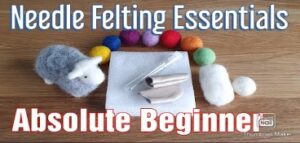What is the process of felting?
Felting is a process of transforming a protein fiber, such as animal fiber from alpaca, sheep wool, yak, etc., into a piece of fabric by matting, condensing and pressing the wool together to interlock the individual fibers.
Tips Every Needle Felter Should Know
There are several important tips for felters. For example, you should always poke your felt vertically, not diagonally. As you stab into your felt multiple times, your felt will become tighter and your felt should always be firm. It’s easier and also faster to make a knot in your felt to create a base. Your felt fabric will end up being at least 30% smaller once you have completed your felt project. However, it is a good idea to use less wool than what what you expect to use, as you can always add in more wool, but you can’t take out extra wool from your felt project.

The Felting Needles
Felting needle sizes can range anywhere from 19 to 42. The higher the needle number, the finer the needle is.
What is the difference between wet and dry felting?
Dry felting is the process of interlocking or blending wool or fibers together to create felt fabric. Wet felting uses a different process where water, water temperature fluctuation, agitation, and organic olive oil soap is used to create felt fabric.
Types of felting
There are many different felting methods including wet felting, dry felting, nuno felting, cobweb felting, lattice felting, 3D felting, and resist felting.


 No products in the cart.
No products in the cart. 